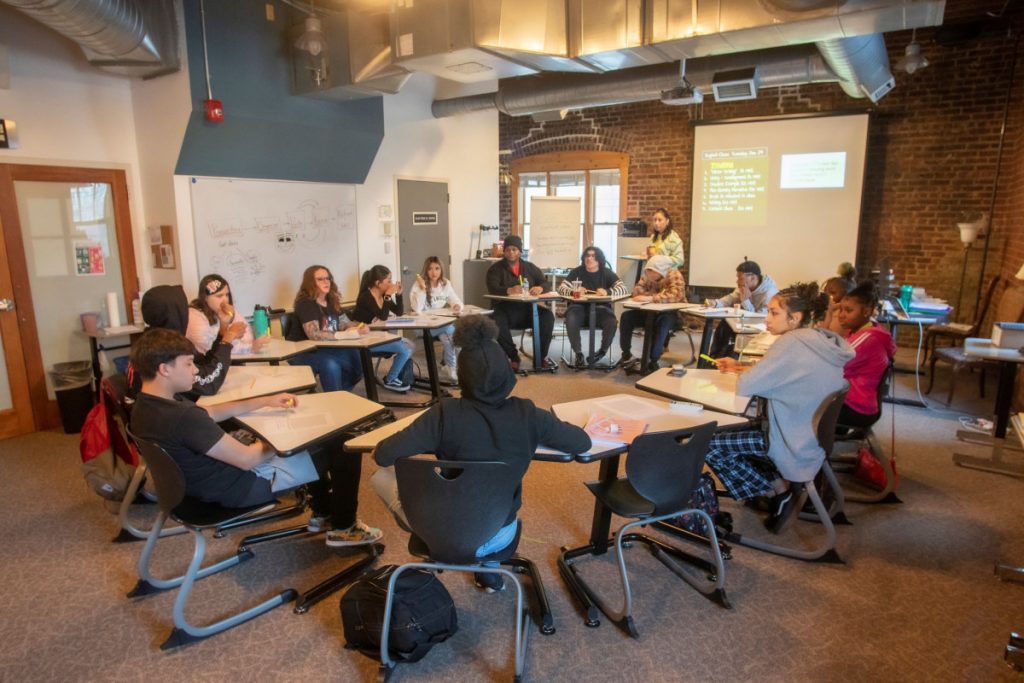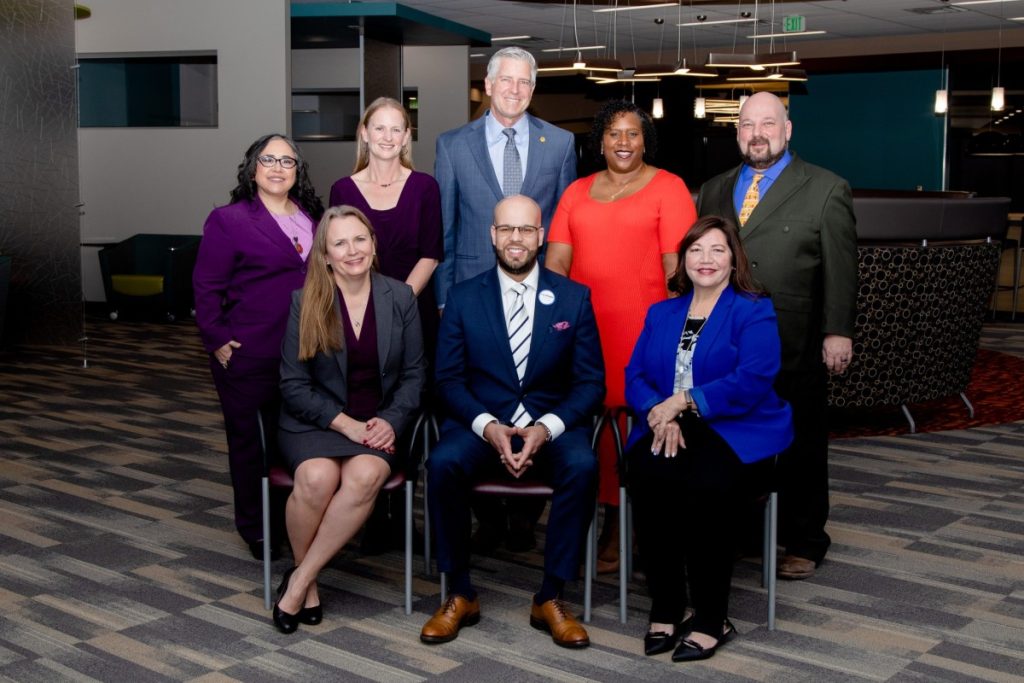I am a parent at the Denver School of the Arts (DSA), a magnet school serving students in grades 6-12 that is run by the Denver Public Schools (DPS). I watched with interest the recent community process and Board of Education discourse about the expansion of DSA through a $40 million investment in a neighboring property.
This expansion intends to open up 175 new seats in DSA’s middle grades and 425 at the high-school level.
A stated goal of the expansion is increasing “access to high quality arts programming for low income students and students of color.” As critics have long pointed out, DSA doesn’t serve a population anywhere near reflective of Denver’s kids. Frankly, its demographics look much more like that of a private school, although one that is publicly funded.
As a parent of a Black student at DSA, I fully support the goal of diversifying the school. More students who look like our daughter deserve a robust arts experience. Further, part of our daughter’s lived experience at DSA has been the discomfort of being “the only,” or one of a very few, in classrooms and other settings.
Although there certainly are things we like about the school, especially its creative writing program, the experience has been isolating and difficult at times (start at 22:00).
Nearly all families at DSA welcomed the idea of serving a more diverse student population, and I imagine few people anywhere would oppose this goal on its face. As with most things, however, it is much more complicated than it initially appears.
The recent staff presentation recommending the $40 million investment in DSA’s expansion did not include numerical goals to benchmark what would constitute an adequate increase in “access” in order to justify the expense.
It also did not provide analysis about where these more diverse students would come from, or impacts their movement might have on other existing schools, especially as Denver experiences declining enrollment and thus is exploring school consolidations.
What would a representative DSA look like?
If we are serious about DSA serving students who are representative of Denver, we are talking about shifting who sits in hundreds of seats, not just in the 175 new middle-school seats the expansion will create. (Because DSA is a 6-12 school, who attends at middle school fundamentally impacts who will attend at high school, so I focus on the middle school here.)
Extrapolating from the staff report, for DSA’s middle school to reflect DPS’s overall demographics, it would need to:
- Increase the number of middle-school students who qualify for free or reduced lunch from 47 in 2020-2021 (out of 431 students) to 390 (out of 600) in the future;
- Serve 440 students of color, out of the 600 middle-school seats of the future, compared to 150 in 2020-2021;
- Expand dramatically its service to multilingual learners, from 39 middle schoolers in 2020-2021 to 216 in the future; and
- Proportionately serve students with individualized education plans (IEP), more commonly known as “special education students.” Right now, DSA’s middle-school program serves just 17 of these students. To match the district average, the number would be closer to 65 in the future.
DSA’s top feeder cannot remain its top feeder
Staff asserted that “because DSA is a city-wide highly specialized program, we expect the expansion will not impact enrollment significantly at any other individual DPS school.” The truth is DSA’s middle-school students currently are drawn disproportionately from two places: the Greater Park Hill-Central Park (GPHCP) Enrollment Zone and from out-of-district. (See Table, below.)
Indeed, in 2020-2021, the number one place DSA middle-school students lived was inside the GPHCP Enrollment Zone, with 28% of its students residing there. This area of town is not representative of Denver students. If current enrollment patterns hold and more students in this zone gain access to seats at DSA, the hoped-for “diversification” will not happen.
Also, if more GPHCP zone students were to attend DSA, what are the potential impacts to existing small schools in the area like Denver Discovery, a middle school in the enrollment zone which the community saved from an enrollment-based closure in 2019, or Odyssey, a K-8 public charter school just blocks from DSA? For very small schools like these, every student matters.
For DSA to proportionately serve students from across Denver, it likely will need to curtail, not expand, seats in comparatively affluent, privileged areas like the GPHCP zone, thus increasing the share of seats among more diverse students who live elsewhere — and ensure all 175 of the new middle-school seats serve more diverse students.
Where would the desired diverse students come from?
Likely, the desired diverse students would have to come from the Far Northeast and the west side of Denver, the areas of our city with the most diverse student populations. This then raises a parallel question: what are the potential impacts to existing schools in those areas?
About 5% of DSA middle-school students (n=21) resided within the Far Northeast Middle School Enrollment Zone in 2020-2021, so DSA would need to dramatically increase service to students living there. The Green Valley Ranch neighborhood is expected to grow some in future years, but the Montbello neighborhood’s elementaries are facing enrollment declines, which means fewer students will matriculate to 6th grade.
Further, the DPS Board of Education has committed to creating a new middle school to feed into the new Montbello High School and also to protecting the enrollment health of STRIVE Prep Montbello, after that middle school was forced to move off of the Montbello campus to the Noel campus.
DPS also needs to ensure enough middle-school students stay in the area to produce needed matriculation into the other two high schools also opening in the Far Northeast, the Robert F. Smith STEAM Academy and DSST Elevate (formerly called “DSST Noel High School.”) Of note, the “A” in STEAM stands for “arts,” so special attention should be paid here.
DSA would also need to dramatically increase its service to students from West Denver. In 2020-2021, about 7% of DSA middle-school students (n=29) came from this area. Southwest and Northwest elementaries are facing wicked enrollment declines, however, which again means fewer students matriculating to middle school.
Special attention should be paid to Kunsmiller Creative Arts Academy, a K-12 school of choice in the region that has already experienced a 30% decline in its elementary enrollment between 2016-2017 and 2020-2021, as well as a 15% decline in its middle-grades enrollment over the same period.
Should DSA prioritize students who live in Denver?
As mentioned previously, out-of-district students make up a large share of DSA’s current student population. Twenty-one percent of DSA’s middle-school students were from out-of-district in 2020-2021; at high school, that rose to a shocking 35%.
Through an open-records request to DPS, data from the more recent 2021-2022 year and covering all grades (6-12) at DSA shows:
- Fewer than 7% of out-of-district students qualified for free or reduced lunch, compared to 65% of Denver students overall;
- 6% were multilingual learners, compared to 36% of Denver students; and
- 13% of out-of-district students were Latinx, 6% were Black, 5% were “multiple races,” and an additional 5% of students were students of color, but their numbers were too small to be assigned into one of the remaining categories publicly, given confidentiality provisions. In all, 29% of out-of-district students at DSA were students of color, compared to the 74% of Denver students who are students of color.
it is clear that implementing a priority for Denver residents in DSA admissions could prove highly valuable in increasing access for “low income students and students of color.”
Of course, prioritizing seats for students who reside in Denver could impact other existing schools. DSA application data is not publicly accessible, so we also do not know how many Denver students currently apply, but are not admitted, nor do we know where they reside or their demographics.
More information surely is needed, and from a baseline equity perspective: Every other school in DPS prioritizes Denver residents, district and charter alike. Why shouldn’t DSA? I’d also note: this change can be made now. It is not dependent on the expansion.
Multiple issues, no clear paths
As the staff presentation pointed out, there are numerous other issues that also need to be addressed, not the least of which are DSA’s highly selective admissions process and the need for a more comprehensive, city-wide approach to arts education.
By design, the current process at DSA prevents entry of students who do not yet demonstrate some level of proficiency in one of the school’s arts majors, either because they attended elementary schools without robust arts programs and/or because they lacked access to private lessons and the like.
A 2016 report, for example, showed that only 8 students out of the thousands who attended one of DPS’s 101 higher-poverty elementary schools gained entry into DSA. Eight students. Out of thousands. That is appalling.
Whatever the future changes are at DSA or in arts education across our city, they will come too late for our daughter; she will graduate next year.
Still, I felt compelled to speak out, because I worry that DPS may have made a $40 million decision premised on promises to Denver’s “low income students and students of color” without clear paths to keep those promises and without full transparency around possible impacts to existing schools in Denver’s communities of color, which already are taking the brunt of enrollment declines.
What I know for sure is that the end result cannot be a $40 million investment of public dollars in a magnet school that continues to serve a private-school population.
Where Do DSA’s Current Students Come From?
Compiled from: http://media.dpsk12.org/enrollmentsnapshots/ES425.PDF
| Middle | 2020-2021 # of students | % 2020-2021 |
| Greater Park Hill-Central Park Middle School Zone | 122 | 28% |
| Out of District | 92 | 21% |
| Hill Campus of Arts and Sciences | 54 | 13% |
| Near Northeast Middle School Zone | 31 | 7% |
| Merrill Middle School | 28 | 6% |
| Other DPS Schools | 24 | 6% |
| Far Northeast Middle School Zone | 21 | 5% |
| Northwest Middle School Zone | 20 | 5% |
| Morey Middle School | 17 | 4% |
| Hamilton Middle School | 13 | 3% |
| Grant Beacon Middle School | 9 | 2% |
| Total | 431 | |
| High School | ||
| Out of District | 237 | 35% |
| Northfield High School | 109 | 16% |
| East High school | 86 | 13% |
| George Washington High School | 67 | 10% |
| South High School | 49 | 7% |
| North High School | 45 | 7% |
| Thomas Jefferson High School | 31 | 5% |
| Far Northeast High School Zone | 17 | 3% |
| Manual High School | 13 | 2% |
| John F. Kennedy High School | 7 | 1% |
| Other DPS Schools | 7 | 1% |
| Total | 668 |




